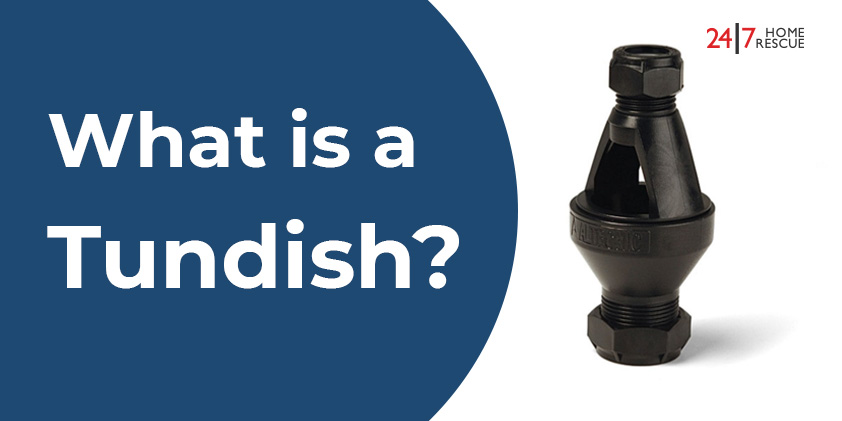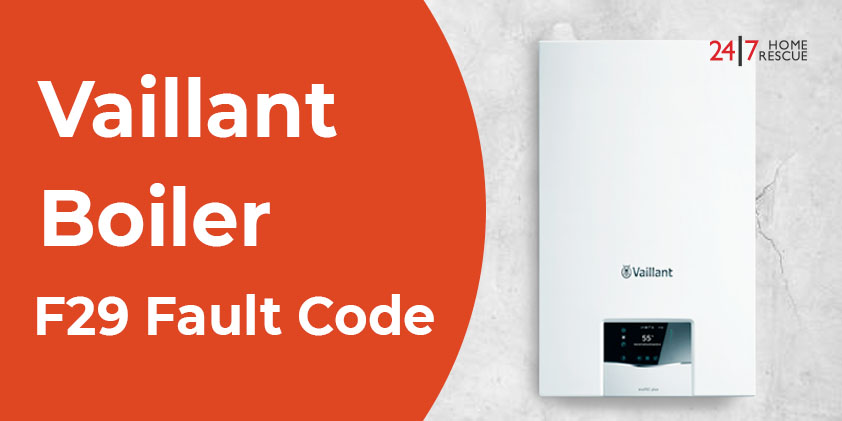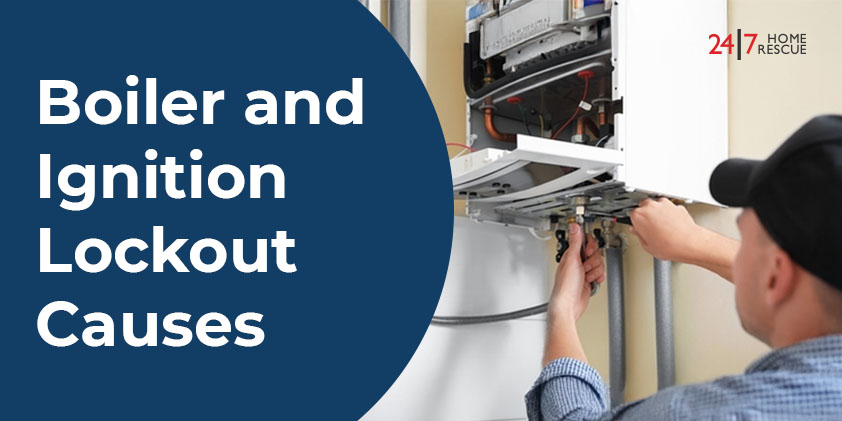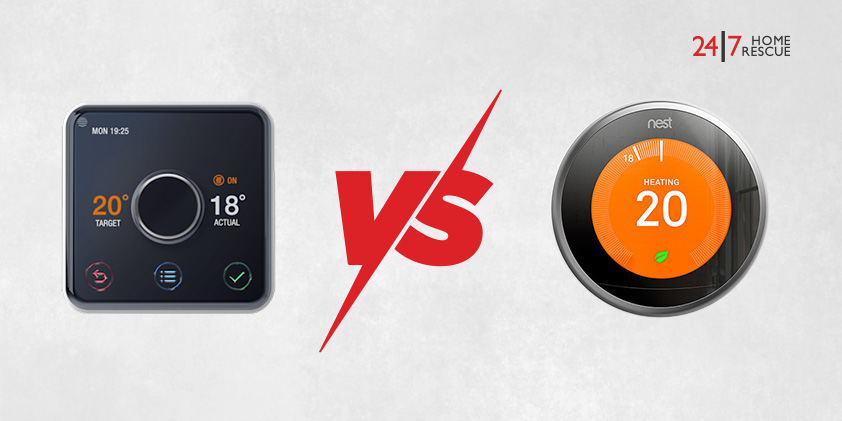
What is a Tundish?
A tundish is a crucial yet often overlooked fitting in plumbing and heating systems, specifically designed for managing excess water or steam that escapes from pressure or temperature relief valves. Its primary function is to facilitate a safe and visible discharge pathway for this excess, ensuring that it does not inadvertently contaminate the clean water supply.
Tundishes are most found in systems like unvented hot water cylinders, sealed boilers, and other pressure-contained setups, where they serve as an important safety mechanism. The inclusion of an air gap between two pipes is a critical feature that prevents the backflow of potentially contaminated water, thereby aligning with regulations aimed at safeguarding public health. Though it may appear to be a minor component, the tundish plays a monumental role in maintaining the efficiency, regulatory compliance, and safety of your home’s plumbing system.
What is a Tundish Used For?
A tundish serves three primary and interconnected functions that emphasize its importance in heating and hot water systems:
1. Monitoring Safety Discharges
The tundish acts as a transparent indicator for monitoring discharges that occur when your system experiences excess pressure or temperature. When these conditions arise, water or steam is released through a relief valve. The tundish provides a visible area where this discharge can be observed immediately, acting as an early warning mechanism that can alert homeowners or engineers to potential issues. Common indicators of trouble include:
- A malfunctioning thermostat that may lead to overheating
- Blockages within the system
- Excessive pressure levels that could compromise system integrity
- Faulty relief valves, which may require inspection or replacement

Boiler Repair
Book your boiler repair service online and save time and effort. Our certified engineer will provide you with hassle-free assistance.
2. Preventing Contamination
A pivotal function of the tundish is to prevent any dirty or hazardous water from re-entering the clean water supply. This is accomplished through a visible air gap between the inlet pipe (connected to the relief valve) and the outlet pipe leading to the drainage system. This design makes back-siphoning impossible, thus adhering to essential requirements set forth by the UK Water Supply (Water Fittings) Regulations. The effectiveness of this feature is vital for ensuring that potable water remains uncontaminated.
3. Meeting Legal Standards
For unvented hot water systems, the inclusion of a tundish isn’t merely a recommendation; it is a legal requirement stipulated by building regulations, particularly in England and Wales. These regulations demand that any system with safety discharge mechanisms must include a tundish. For both homeowners and installers, understanding this legal obligation is key to ensuring compliance and avoiding potential penalties.

Boiler Insurance You Can Trust
Get boiler breakdown and landlord cover including free annual boiler service.
Choose your policy type
How Does a Tundish Work?
The tundish is typically installed vertically, connecting directly to a pressure relief valve through an upper inlet pipe. Its design allows it to funnel any discharges downward into an outlet pipe that directs water to a drain. Unique to the tundish is the intentional separation from the waste line, which creates a visible air gap that effectively prevents water from being siphoned back into the pressure system. The operational sequence is straightforward yet critical for safety:
- When pressure or temperature exceeds predefined safety levels, the relief valve opens.
- Water or steam is released and collected temporarily by the tundish.
- The collected liquid is channeled through the outlet pipe to an appropriate drainage point, while also leaving a visible indication of discharge.
Where Is a Tundish Located?
Tundishes are usually installed in locations where pressurized water systems are present, such as:
- Unvented hot water systems, like Megaflo units that store heated water under pressure.
- System or combination boilers that feature pressure relief valves.
- Solar thermal heating installations that require safety discharges.
- Commercial hot water storage systems that manage large volumes of water.
Typically, the tundish is mounted within a 600 mm radius of the pressure relief valve, at a height that allows for easy observation and maintenance. This strategic positioning is essential for timely inspections and maintenance.
What is a Tundish Drain?
Tundish drain refers to the specific pipework that extends from the bottom outlet of the tundish to the drainage system. This pipework is responsible for safely directing the discharged water away from the tundish, commonly into:
- A trapped waste pipe to prevent any foul odors from entering
- An external drain to facilitate proper disposal
- A soil stack that directs waste water down through the building’s plumbing It is crucial that this drain is not directly connected to the system; maintaining the required air gap is essential for hygiene and compliance with plumbing regulations.
Is a Dripping Tundish Dangerous?
A dripping tundish typically indicates an underlying fault that should not be ignored. Some frequent causes of leaking include:
- Excess pressure accumulating within the cylinder
- Defective pressure or temperature relief valves that fail to operate correctly
- Scale build-up or blockages obstructing the relief valve or associated pipework
Thermostat malfunctions leading to overheating If these issues are neglected, they can result in detrimental consequences such as:
- Water leakage that could compromise structural integrity
- Reduced efficiency of the boiler, which may escalate energy costs
- System failures that could ultimately render the system non-operational or pose a risk of scalding. If you observe frequent pressure loss in your boiler, it’s prudent to check the tundish, as it might be the visible symptom of a more serious problem.

Boiler Service
Ensure your boiler runs efficiently and safely with our professional boiler servicing. Regular maintenance will save you money in the long run and potentially prevent breakdowns.
Tundish vs. Tundish Valve
While the tundish itself is a passive fitting that serves primarily as a conduit between the pressure relief valve and the drainage system, it does not actively control flow or pressure. Conversely, a tundish valve refers to separate components, such as a non-return valve or flow restrictor, that may be installed upstream of the tundish to help manage or prevent backflow. Together, these devices work in harmony to ensure safe operation in pressurized environments.
Tundish Regulations & Requirements
Building Regulations, specifically Approved Document G (G3), outlines a range of installation guidelines that must be adhered to:
- The tundish should be no more than 600 mm away from the outlet of the valve.
- It must be installed vertically and situated in close proximity to the hot water cylinder.
- A minimum air gap of 22 mm must be maintained between the tundish outlet and the recipient drainage system.
The discharge pipe (referred to as D2) should:
- Drop vertically at least 300 mm before encountering any bends
- Maintain a slope of at least 1 in 200 for optimal flow
- Be constructed of heat-resistant materials, clearly marked, and sized adequately to manage discharge without restriction Failure to comply with these regulations can result in system malfunctions, unsuccessful inspections, or hazardous operational conditions that could endanger both property and occupants.
What is a Tundish in Plumbing Terms?
In broader plumbing applications, a tundish is defined by its roles in:
- Safely handling overflow or emergency discharges that may arise in various systems
- Preventing the re-entry of contaminated water into a clean water supply
- Ensuring compliance with safety regulations and water quality standards
Understanding the importance of a tundish in plumbing systems will not only enhance your knowledge but also empower you to maintain a safe and compliant environment in your home or facility.
Conclusion
The tundish may be a small component, but it’s a frontline defender of safety and system integrity in modern heating and plumbing setups. From preventing contamination to alerting you of system faults, it plays a vital role, and one that must comply with strict regulations to function effectively.
Whether you’re installing a new system or investigating a dripping pipe, understanding how a tundish works and how to maintain it is essential for safe and efficient home heating.
Need help with your heating system? Contact 24|7 Home Rescue — our expert engineers are available 24/7 to assist you.

Plumbing Repairs
Protect your home from leaks and water damage with our reliable one-off plumbing repairs. We’ll fix issues in your hot and cold-water pipes, helping you maintain a safe, efficient system and avoid costly sudden repairs.









